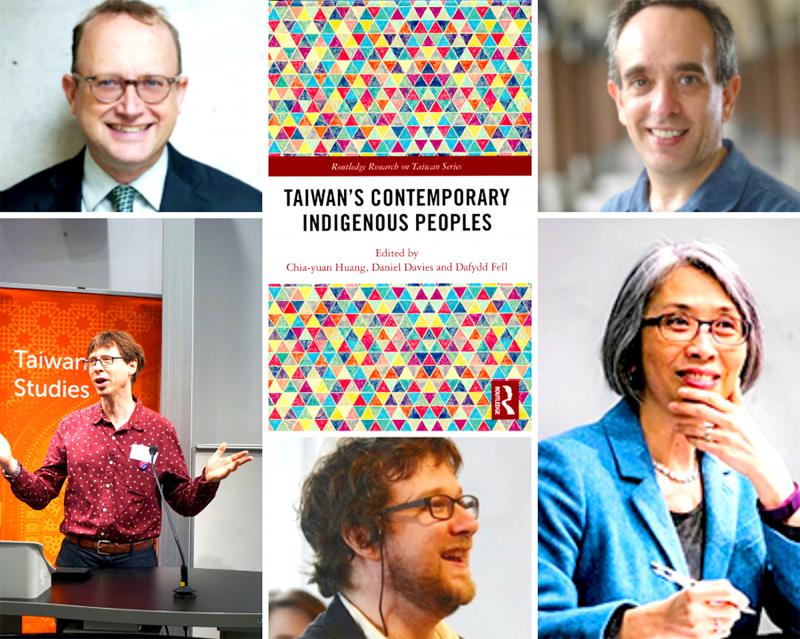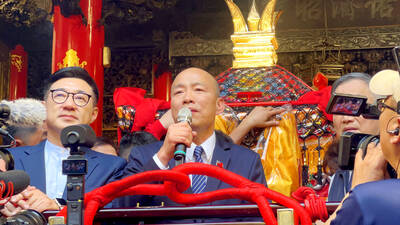This month saw the online launch of an English-language book that it is hoped will enhance Taiwan studies at universities in Europe and further afield, providing a wider audience with unique insight into a field of study that is attracting increasing attention.
Taiwan’s Contemporary Indigenous Peoples is the result of a lecture series at London’s Centre of Taiwan Studies, part of the University of London’s School of Oriental and African Studies. These talks on issues related to Taiwanese Aborigines formed the basis of the new publication, the whole project facilitated by a grant from Taipei’s Shung Ye Museum of Formosan Aborigines (順益台灣原住民博物館).
“Within Taiwanese universities there has been a rapid growth in the numbers of Indigenous teaching and research programs in the last decade,” says Dafydd Fell, director of the centre. “There have also been parallel trends in Indigenous language promotion in the media, such as Indigenous Television, and in schools. Since some of these Indigenous studies programs in Taiwan are also developing English language courses, we are hoping our book can be widely used in Taiwan.”

Photos courtesy of Dafydd Fell
Fell added that within the field of international Taiwan Studies there has been a similar growth in interest in Aboriginal topics, but much of this work tended to be dispersed across different disciplines. The book brings together studies on modern Taiwanese Indigenous topics.
Both trends form part of a growing global interest in Indigenous studies that Taiwan is just one part of, with the nation providing fascinating examples of a number of aspects of contemporary indigeneity. Part of a multi-ethnic society with diverse cultural characteristics, Taiwan’s Indigenous peoples have lived on the island for thousands of years. Their languages belong to the Austronesian family and they have close cultural ties to Oceania and the South Pacific.
The book has four section themes: historical perspectives, the arts, education and politics. Chapters are written not only by academics but also by writers from within the Taiwanese Indigenous rights movement.
The authors who spoke about their respective chapters in the book at its launch, described by Fell as “four giants of Taiwan studies,” highlight the diversity of its content.
Niki Alsford showed that as a result of land dispossession, lack of employment opportunities and the deterioration of traditional livelihoods, there has been a significant increase in Indigenous domestic migration into urban environments. This has made it important for Indigenous peoples to maintain a framework of traditions and values compatible with multiple community-based, pan-Indigenous and wider Taiwanese identities.
Scott Simon talked about how Indigenous peoples have adapted Christianity to their local cultural context rather than passively accepting external values, defining contemporary religious communities and institutions as hybrid creations not foreign impositions.
Kerim Friedman used the concept of chronotope to discuss shifting representations of Taiwan’s Indigenous peoples in documentary films, while Chang Bi-yu (張必瑜) discussed representations of Indigenous peoples in educational materials, focusing on the dominance of a “Han perspective” and the stigmatization and reduction of Indigenous peoples to limited social and physical spheres.
Fell says there has been growing interest in Taiwan’s Indigenous peoples among students at the Centre for Taiwan Studies.
“I think students are often curious about the way many of the trends we see in Indigenous society are quite different from the rest of Taiwan. For instance, patterns in Indigenous voting behavior and party identification,” he says.
A more inclusive approach to Indigenous cultures at present contrasts with past efforts aimed at enforcing assimilation.
“This did a huge amount of damage in the area of language policies, as so many Indigenous languages in Taiwan became endangered,” Fell says. “It is encouraging to see the way Indigenous cultures have become a source of pride and part of Taiwan’s national branding in recent years.”
Fell says that Taiwan has used Indigenous or Austronesian heritage as part of its international diplomacy efforts, particularly in its relations with the Pacific region, this forming the subject matter of one of the book’s chapters.
However, as pointed out at the book launch, Taiwan’s Indigenous peoples are still often misunderstood, with a tendency for them to be inaccurately portrayed as a homogeneous, exotic group.
There is also plenty of scope for further study of a number of important issues including Indigenous sovereignty, urban indigeneity (bearing in mind that more than 50 percent of Indigenous people now live in urban areas) and Indigenous knowledge, particularly relating to environmental issues.

April 14 to April 20 In March 1947, Sising Katadrepan urged the government to drop the “high mountain people” (高山族) designation for Indigenous Taiwanese and refer to them as “Taiwan people” (台灣族). He considered the term derogatory, arguing that it made them sound like animals. The Taiwan Provincial Government agreed to stop using the term, stating that Indigenous Taiwanese suffered all sorts of discrimination and oppression under the Japanese and were forced to live in the mountains as outsiders to society. Now, under the new regime, they would be seen as equals, thus they should be henceforth

Last week, the the National Immigration Agency (NIA) told the legislature that more than 10,000 naturalized Taiwanese citizens from the People’s Republic of China (PRC) risked having their citizenship revoked if they failed to provide proof that they had renounced their Chinese household registration within the next three months. Renunciation is required under the Act Governing Relations Between the People of the Taiwan Area and the Mainland Area (臺灣地區與大陸地區人民關係條例), as amended in 2004, though it was only a legal requirement after 2000. Prior to that, it had been only an administrative requirement since the Nationality Act (國籍法) was established in

Three big changes have transformed the landscape of Taiwan’s local patronage factions: Increasing Democratic Progressive Party (DPP) involvement, rising new factions and the Chinese Nationalist Party’s (KMT) significantly weakened control. GREEN FACTIONS It is said that “south of the Zhuoshui River (濁水溪), there is no blue-green divide,” meaning that from Yunlin County south there is no difference between KMT and DPP politicians. This is not always true, but there is more than a grain of truth to it. Traditionally, DPP factions are viewed as national entities, with their primary function to secure plum positions in the party and government. This is not unusual

US President Donald Trump’s bid to take back control of the Panama Canal has put his counterpart Jose Raul Mulino in a difficult position and revived fears in the Central American country that US military bases will return. After Trump vowed to reclaim the interoceanic waterway from Chinese influence, US Defense Secretary Pete Hegseth signed an agreement with the Mulino administration last week for the US to deploy troops in areas adjacent to the canal. For more than two decades, after handing over control of the strategically vital waterway to Panama in 1999 and dismantling the bases that protected it, Washington has